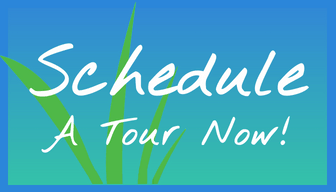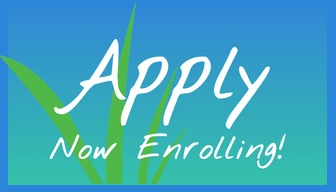by Leslie Stager
 Prenatal Massage offers therapists a unique, inspiring opportunity, not only to relieve pregnancy discomforts, but to also massage two people at once and potentially impact the mother and infant’s relationship for the rest of their lives! Pregnancy massage can reduce mother’s anxiety while increasing beneficial “happy” hormones: dopamine, serotonin, and oxytocin. A “happy” womb environment means babies develop more effective immune systems and more tolerance for handling stress. Studies also indicate that women receiving pregnancy massage have reduced rates of postpartum depression and touch their newborn infants more. These extra hours of infant MotherTouch is correlated with an increased sense of security, higher IQ, and having more advanced motor and language skills by age 8, than those without extra touch. It seems nurturing touch is “Vitamin T”—a vital nutrient for both mother and baby!
Prenatal Massage offers therapists a unique, inspiring opportunity, not only to relieve pregnancy discomforts, but to also massage two people at once and potentially impact the mother and infant’s relationship for the rest of their lives! Pregnancy massage can reduce mother’s anxiety while increasing beneficial “happy” hormones: dopamine, serotonin, and oxytocin. A “happy” womb environment means babies develop more effective immune systems and more tolerance for handling stress. Studies also indicate that women receiving pregnancy massage have reduced rates of postpartum depression and touch their newborn infants more. These extra hours of infant MotherTouch is correlated with an increased sense of security, higher IQ, and having more advanced motor and language skills by age 8, than those without extra touch. It seems nurturing touch is “Vitamin T”—a vital nutrient for both mother and baby!
The Myths: Though the rewards of bodywork during pregnancy are many for clients and therapists, some massage therapists struggle with sidelying body mechanics, draping, and bodywork techniques. They may also be influenced by common pregnancy massage myths. The result? Many pregnant clients receive unsatisfying or substandard bodywork that does little to improve their physical complaints (and may exacerbate some!).
Have you heard these unsubstantiated warnings:
- Don’t massage the labor-inducing acupressure points.
- Avoid deep tissue bodywork; it may cause a miscarriage.
- Avoid the ankles, feet, abdomen. (Read more about ankle acupressure/reflexology zones in my article in ABMP magazine.)
- Avoid massage during the first trimester.
- Avoid or use only light touch on inner legs.
- A table with a cut-out for the belly is the perfect choice for prone pregnancy positioning.
- Women should only lie on their left side.
None of these concerns are accurate, though some may have a kernel of truth. So what are real concerns when working with pregnant clients?
Supportive Positioning is top of the list! Whether clients are sidelying or semi-reclining, improper positioning could aggravate pregnancy complaints, including uterine ligament strain, sacral torsion, edema and leg cramps, while supportive positioning can prevent, minimize or even relieve these conditions.
So, what does supportive sidelying positioning look like?
The top knee and foot rest on 2-3 flat pillows, or a sturdy bolster and pillow, ensuring that the leg is horizontal and parallel to the table and knee is level with the trochanter. The arm and hand are supported on a pillow over the draping sheet, preventing breast compression and medial shoulder rotation, while simultaneously securing the drape over the breasts. The pregnant belly needs supportive alignment as well, with a small wedge, to prevent uterine ligament strain. Support at the low back/waist is also advisable. Watch my positioning video here on Youtube.
With proper positioning, the therapist can address the following complaints:
Heartburn, which is common during pregnancy, can be relieved or prevented during sessions by using semi-reclining positioning. This puts the client’s head above her stomach while offering easy access to head-neck-shoulders, upper legs, belly and breasts. It’s a great position for foot reflexology, and avoids diaphragm restriction and uterus-baby compression on the aorta or vena cava, which may occur with supine positioning. It’s imperative, however, that the low back be well-supported and that knees are bolstered to prevent exacerbating back, hip, and neck tension.
Sacro-iliac hypermobility is normal during pregnancy, influenced by the hormone Relaxin, which softens and ‘relaxes’ ligaments that need to expand for birth. Sacral Torsion is exacerbated if the leg is not properly supported in sidelying position, with all joints aligned. This allows your client to relax as you use specific techniques to effectively mobilize the sacrum, open the SI joint, release pelvic floor attachments externally, and rebalance the ilium/sacrum in relation to the pubic bone.
Uterine Ligament Strain or Spasm are common, influenced by non-supportive positioning, and by jack-knifing forward to sit up with a big belly. Uterine ligament spasms refer pain and nerve-like sensations to the hips, legs, and pubic bone. Broad compressive strokes on gluteus medius, hip mobilizations, and specific massage to the round ligament (palpable through the abdomen) will help reduce or eliminate this discomfort.
Edema of hands and feet is normal outcome of the changes in pregnancy physiology. Additionally, the growing belly pressing on the inguinal region increases swelling of the feet and tendency toward varicose veins and clots. Take time to notice: Is her foot drooping down off the pillows? Is her down-side shoulder compressed and needing support under her upper torso? Perhaps her hand is hanging down vs. supported on a pillow. Watch positioning to reduce swelling and allow easy access to hands and feet for lymphatic drainage and other techniques.
Useful for All Clients!
Sidelying and semi-reclining positions offer many options for hip, neck, pelvic techniques that can be applied to all clients, not just pregnant women! You may feel awkward at first, but once you master it, you may never go back to supine and prone positioning as your standard!
Join Leslie at the Florida School of Massage for the one-day, 8-hour “Pregnancy Massage Fundamentals” from 9AM – 6PM Saturday November 14. This is a prerequisite and part of the 32-hour “MOTHERTOUCH Prenatal Bodywork Training/Certification” that continues 9AM-6PM Sunday through Tuesday, November 15-17. For more information or to register, click here.
Leslie Stager RN, LMT has attended over 500 births, helping families create more satisfying birth experiences with prenatal and birth massage support. Devoted to the belief that birth can be both empowering and pleasurable, Leslie has worked as a labor and delivery nurse, doula, and childbirth educator. Her information is based on decades of perinatal experience, as well as up-to-date research about the benefits of pregnancy massage, acupressure & nurturing touch during birth, and touch support for postnatal mothers. Visit her website for more information.






